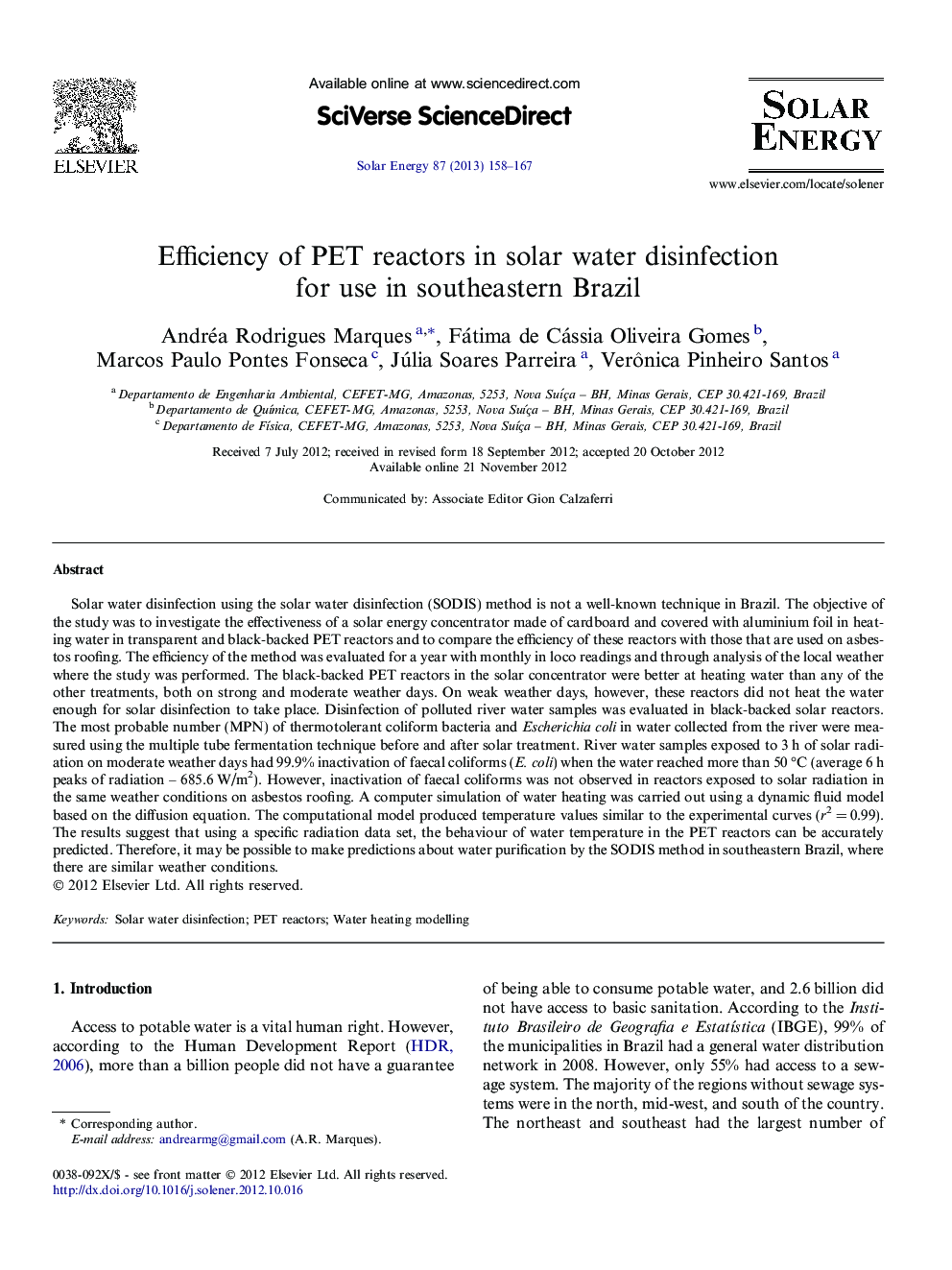| کد مقاله | کد نشریه | سال انتشار | مقاله انگلیسی | نسخه تمام متن |
|---|---|---|---|---|
| 1550685 | 1513130 | 2013 | 10 صفحه PDF | دانلود رایگان |

Solar water disinfection using the solar water disinfection (SODIS) method is not a well-known technique in Brazil. The objective of the study was to investigate the effectiveness of a solar energy concentrator made of cardboard and covered with aluminium foil in heating water in transparent and black-backed PET reactors and to compare the efficiency of these reactors with those that are used on asbestos roofing. The efficiency of the method was evaluated for a year with monthly in loco readings and through analysis of the local weather where the study was performed. The black-backed PET reactors in the solar concentrator were better at heating water than any of the other treatments, both on strong and moderate weather days. On weak weather days, however, these reactors did not heat the water enough for solar disinfection to take place. Disinfection of polluted river water samples was evaluated in black-backed solar reactors. The most probable number (MPN) of thermotolerant coliform bacteria and Escherichia coli in water collected from the river were measured using the multiple tube fermentation technique before and after solar treatment. River water samples exposed to 3 h of solar radiation on moderate weather days had 99.9% inactivation of faecal coliforms (E. coli) when the water reached more than 50 °C (average 6 h peaks of radiation – 685.6 W/m2). However, inactivation of faecal coliforms was not observed in reactors exposed to solar radiation in the same weather conditions on asbestos roofing. A computer simulation of water heating was carried out using a dynamic fluid model based on the diffusion equation. The computational model produced temperature values similar to the experimental curves (r2 = 0.99). The results suggest that using a specific radiation data set, the behaviour of water temperature in the PET reactors can be accurately predicted. Therefore, it may be possible to make predictions about water purification by the SODIS method in southeastern Brazil, where there are similar weather conditions.
► Water disinfection in PET-reactors exposed at sunlight was evaluated.
► Reactors were exposed in cardboard concentrator aluminum-foil-lined and on rooftop.
► A computer simulation of water heating in this system was evaluated.
► Water heating and disinfecting was efficient at strong and moderate weather days.
► The computer model predicts the behaviour of temperature during solarization.
Journal: Solar Energy - Volume 87, January 2013, Pages 158–167